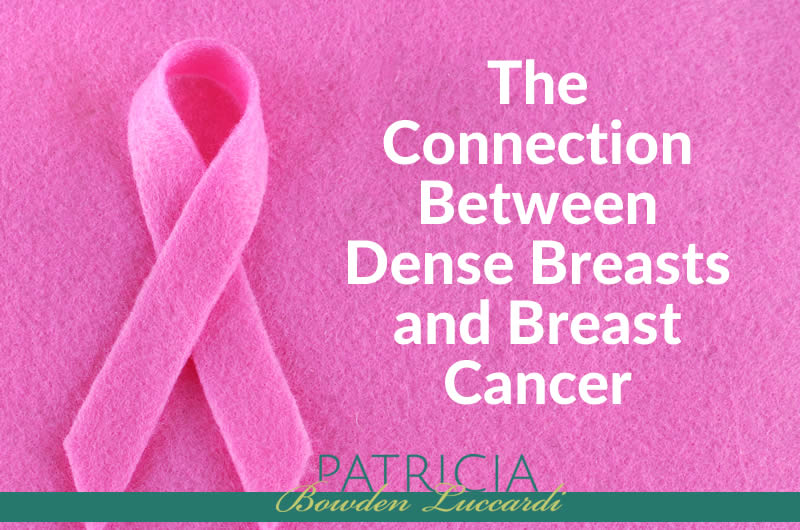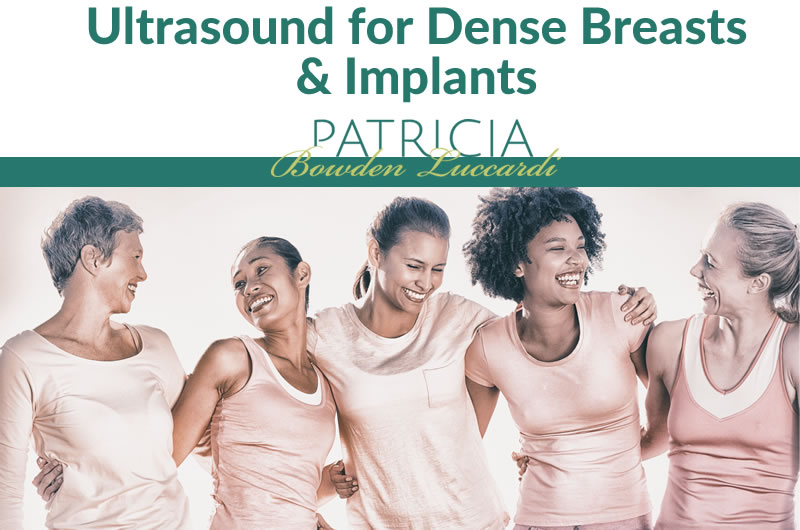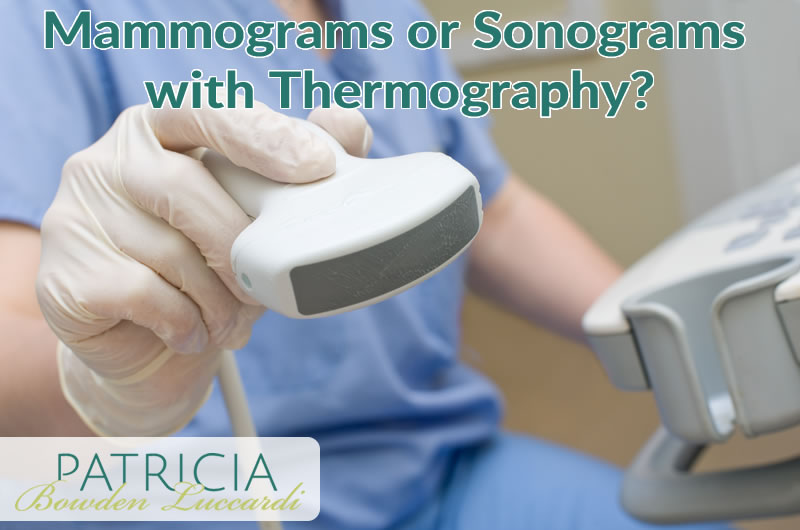The Connection Between Dense Breasts and Breast Cancer
Leave a CommentOctober is Breast HEALTH Awareness Month!
Let’s focus on Breast Health, exploring ways to prevent cancer at a cellular level and minimize our exposure to radiation.
While commonly performed, mammograms are uncomfortable and use ionizing and cancer-causing radiation. It is true that mammograms have saved lives and been helpful in detecting cancer. Many women are still alive today because the cancer was found at a treatable stage, and many are also firm believers in the Pink Ribbon campaigns. And rightly so, because they are survivors of this wicked disease!
Mammograms have been touted as the Gold Standard for over 35 years, yet they are far from perfect. But they’re what women are being offered, and everything else is shunned as misinformation or not scientific.
Mammograms have come under scrutiny over the past 10 years and rightly so. Millions of women are subjected to ionizing radiation every year at the directive of their health care providers. Many women, including some doctors, fear mammograms are causing over-treatment and resulting in more cases of cancer.
According to a 2012 study, The Effects of Three Decades of Screening Mammography on Breast Cancer Incidence, published by scientists in the New England Journal of Medicine, 1.3 million women have received unnecessary and invasive cancer treatments including surgery, radiation, mastectomies, hormone treatment and chemotherapy over the last 30 years. This is largely due to mammograms detecting harmless tumors, lumps, bumps, or cysts.
Also, a study by the Journal of American Medicine found that mammography misses about 50% of tumors in women with dense breasts! This is not a good track record.
The current dialog on breast cancer focuses on finding it and treating it. Treatment and more treatment is being done. However, the risk of breast cancer is four to five times greater in women who have increased density in more than 75% of their breast tissue than in women with little or no density in the breast. One-third of all breast cancers are found in women who have increased breast density in over 50% of their breast.
What exactly is dense breast tissue?
Having dense breast tissue is very common but not abnormal. After a mammogram, ultrasound or MRI a woman may be told she has “increased breast density.” Increased breast density, as detected through these screening techniques, is a strong known risk factor for breast cancer. So what does it mean?
Let’s start by addressing dense breasts and mammograms. Dense breasts make it difficult to identify the tumor on the mammogram.
It is difficult to see a lump, cyst or tumor on a mammogram or ultrasound when there is dense breast tissue present. (See Category C and D in the chart.) Notice how white the breasts are? A tumor is white and so is connective tissue, so it’s a lot like looking for a snowball in a snowstorm!
Types of Dense Breasts
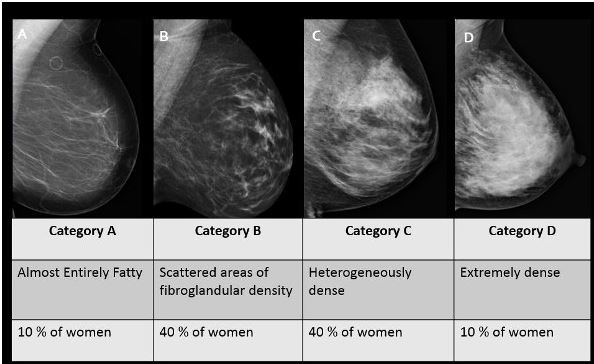
Types of Dense Breasts
Breast tissue is made up of fat, glandular, and fibrous connective tissue. Fat is less dense and appears dark on a mammogram, while glandular and connective tissues are denser and appear light. Your breast will be seen as dense if you have a lot of fibrous or glandular tissue and not much fat in the tissue.
- Lobules produce milk and are often called glandular tissue.
- Ducts are the tiny tubes that carry milk from the lobules to the nipple.
- Fibrous tissue and fat give breasts their size and shape and hold the other structures in place.
Your breast tissue may be called dense if you have a lot of fibrous or glandular tissue and not much fat in the breasts. For most women, breasts become less dense with age, but in some women, there’s little change. Although, there seems to be a link between density and older women who were exposed to Phthalates and BPS’s from hard plastics.
What about breast ultrasound or MRI?
Studies have shown that breast ultrasounds and magnetic resonance imaging (MRI) can help find some cancers that can’t be seen on a mammogram. But the risk is that both ultrasounds and MRIs show more positive findings that turn out not to be cancer. That could result in an unnecessary biopsy.
So, getting extra tests isn’t the solution. Ultrasounds and MRI may not be covered by insurance, as such a policy for dense-breasted women would cost the insurance company a lot in extra tests and false alarms for a small benefit.
What about 3D mammography?
3D mammography, or tomosynthesis, has about a 60% sensitivity, still uses compression and will expose you to 38% more ionizing radiation, which is the most dangerous kind of radiation. This is what you are trying to avoid. So getting extra tests is not necessarily the solution.
The good news is that breast density can diminish over time. However, women whose breast density does not diminish over time are more likely to be diagnosed with breast cancer if they are depending only on anatomical screenings via a mammogram or an ultrasound.
Thermography detects heat and does not detect anatomical structures. So if a woman has a lump or bump and thermography does not detect heat, then it is most often benign—and up to 80% of biopsies can be avoided. Thermography is an adjunct to an anatomical screening, preferably used with ultrasound because it is radiation free—and isn’t that what you are trying to avoid?
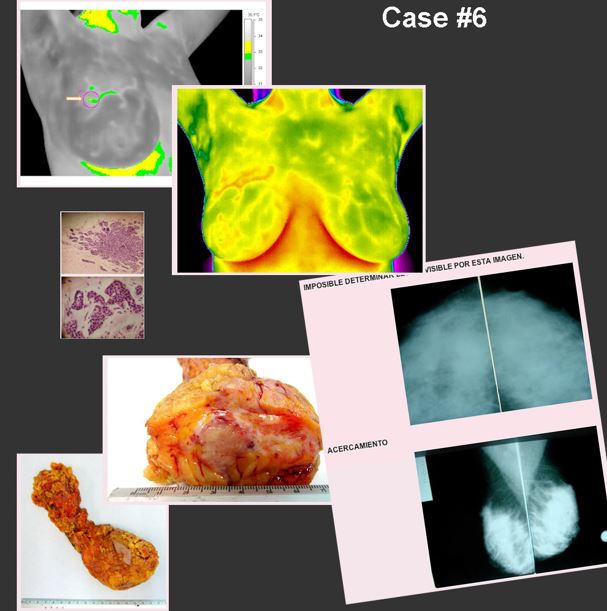
The mammogram on the bottom right shows a woman with a very dense breast.Notice how white it is. The thermographic image about clearly shows the heat of the tumor on her breast.
What Causes Increased Breast Density?
Breast tissue develops primarily during puberty and is altered during pregnancy, breastfeeding, and menopause. Dense breast tissue can be linked to genetic factors; menstrual and reproductive factors; environmental factors; exposure to higher estrogen levels in utero; dietary and lifestyle habits; and hormonal indicators.
Birth control pills can increase density. The longer you use contraceptives, the more density there will be in your breasts. Increased weight gain in adulthood is a factor, as is hormone use starting from age 22 to 28. Alcohol consumption, red meat, sugar and caffeine also increase density.
Is there anything to make your breasts less dense? If you take limited advice from mainstream medicine, the answer is no! There is no diet, no yoga pose, no type of strength training, no pills, no shots—you are stuck with what nature gave you. Unacceptable!
How can you reduce breast density?
- Breast feed for at least six months.
- Increase healthy fats: olive oil and flax seed oil, for example. Use these oils raw, as these have a low burn point.
- Eliminate red meat or greatly reduce it.
- Limit alcohol to one drink a week.
- Sugar has no redeeming value, so cut it out. It feeds cancer cells.
- Eliminate caffeine. Coffee turns into estrogen within 45 minutes.
- Increase fiber intake through flax, chia seeds and psyllium. The more fiber you eat, the more estrogen is removed from the body
- Move toward a plant-based diet. Breasts love all things green—especially the cruciferous family of vegetables.
- Restrict carbohydrates as they turn into sugar.
- Drink organic green tea.
- Try breast massage with specific oils for breast health.
As you can see, breast density is a very common condition, and there is an environmentally safe solution for both screening and alleviation.
Be proactive when it comes to your breast health, especially if you have dense breasts. Here’s to happy healthy breasts!
Share this information with your friends. We all want to have healthy breasts and keep them for the rest of our lives!
Warmest regards,
Patricia

